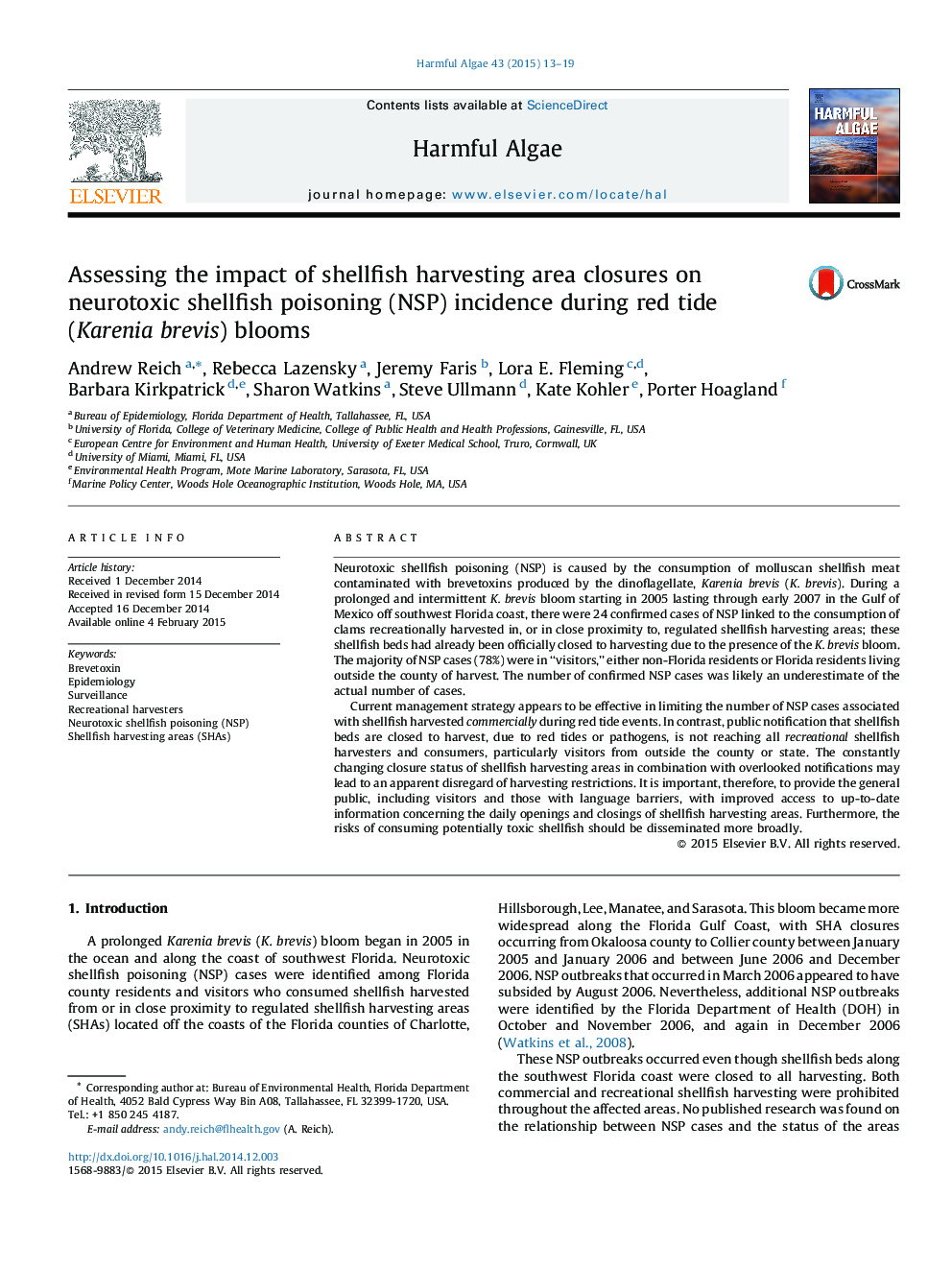| کد مقاله | کد نشریه | سال انتشار | مقاله انگلیسی | نسخه تمام متن |
|---|---|---|---|---|
| 4545278 | 1626928 | 2015 | 7 صفحه PDF | دانلود رایگان |

• Karenia brevis produces brevetoxins which may accumulate in molluscan shellfish.
• The risk for NSP increases during blooms with ingestion of contaminated shellfish.
• The current management strategy is effective for commercially harvested shellfish.
• NSP is occurring at a higher rate among non-commercial harvesters.
• These include out-of-area state-resident visitors and out-of-state visitors to the SW Florida.
Neurotoxic shellfish poisoning (NSP) is caused by the consumption of molluscan shellfish meat contaminated with brevetoxins produced by the dinoflagellate, Karenia brevis (K. brevis). During a prolonged and intermittent K. brevis bloom starting in 2005 lasting through early 2007 in the Gulf of Mexico off southwest Florida coast, there were 24 confirmed cases of NSP linked to the consumption of clams recreationally harvested in, or in close proximity to, regulated shellfish harvesting areas; these shellfish beds had already been officially closed to harvesting due to the presence of the K. brevis bloom. The majority of NSP cases (78%) were in “visitors,” either non-Florida residents or Florida residents living outside the county of harvest. The number of confirmed NSP cases was likely an underestimate of the actual number of cases.Current management strategy appears to be effective in limiting the number of NSP cases associated with shellfish harvested commercially during red tide events. In contrast, public notification that shellfish beds are closed to harvest, due to red tides or pathogens, is not reaching all recreational shellfish harvesters and consumers, particularly visitors from outside the county or state. The constantly changing closure status of shellfish harvesting areas in combination with overlooked notifications may lead to an apparent disregard of harvesting restrictions. It is important, therefore, to provide the general public, including visitors and those with language barriers, with improved access to up-to-date information concerning the daily openings and closings of shellfish harvesting areas. Furthermore, the risks of consuming potentially toxic shellfish should be disseminated more broadly.
Journal: Harmful Algae - Volume 43, March 2015, Pages 13–19